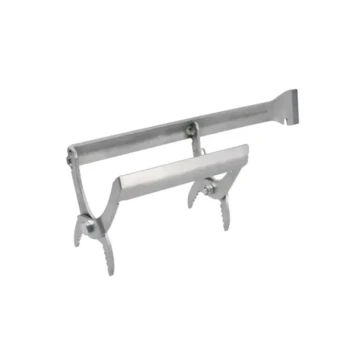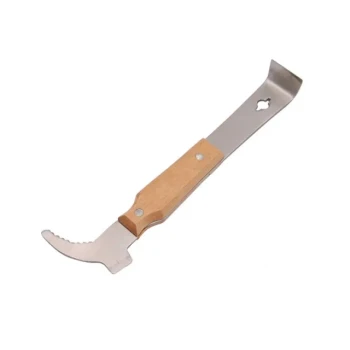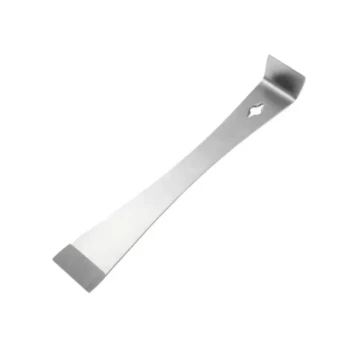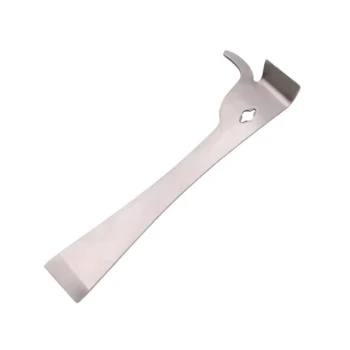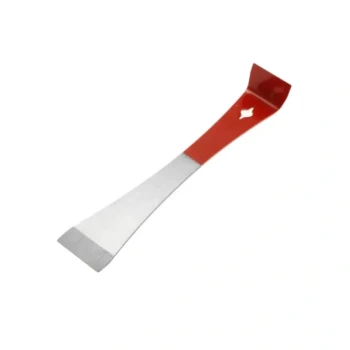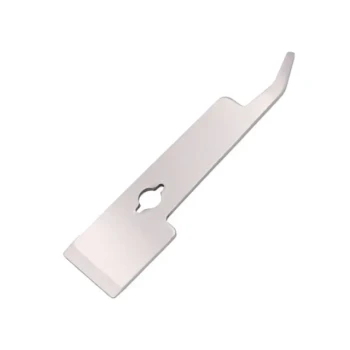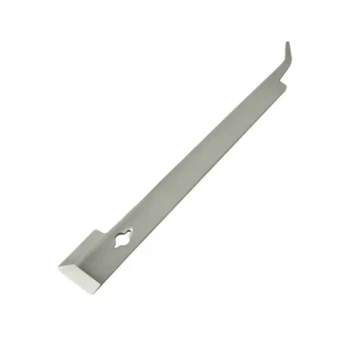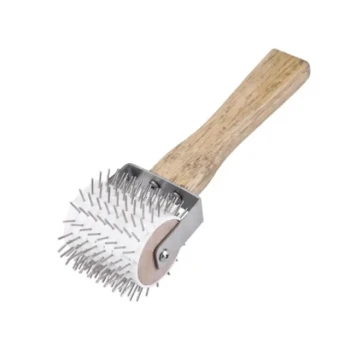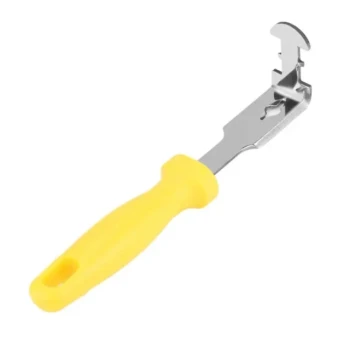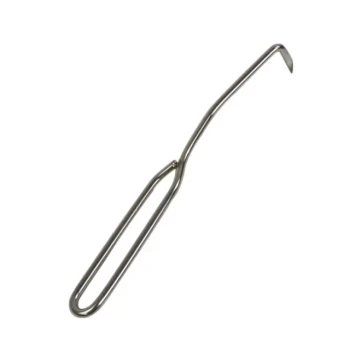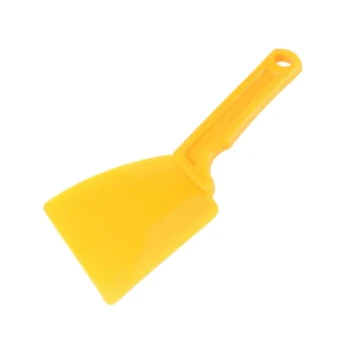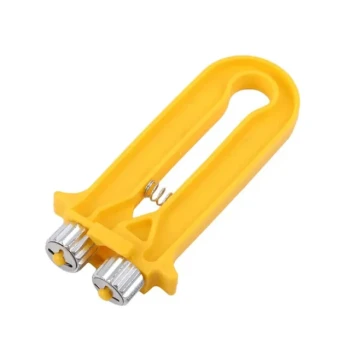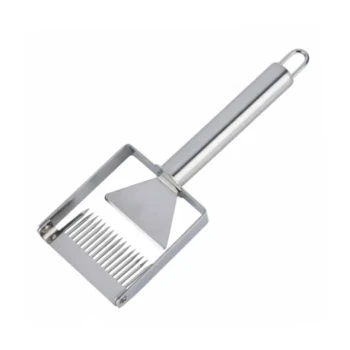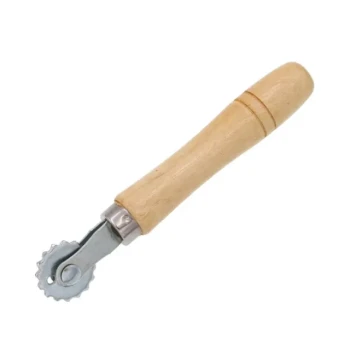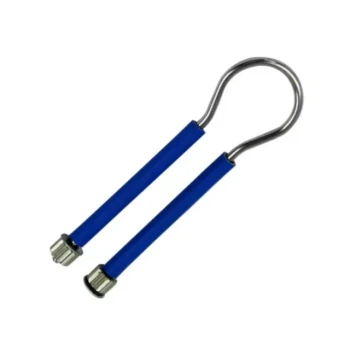In beekeeping, an entrance reducer is a simple tool with a profound impact on colony survival. This small block of wood reduces the size of the hive's main opening, serving two critical functions. It acts as a physical barrier that prevents large pests like mice from entering, and it creates a smaller, more manageable chokepoint that allows the colony's guard bees to effectively defend against smaller invaders like wasps and robbing bees.
The core purpose of an entrance reducer is not merely to block pests, but to manage the colony's defensive perimeter. By shrinking the entrance, you reduce the "attack surface" a colony must defend, conserving its energy and resources, especially during its most vulnerable periods.
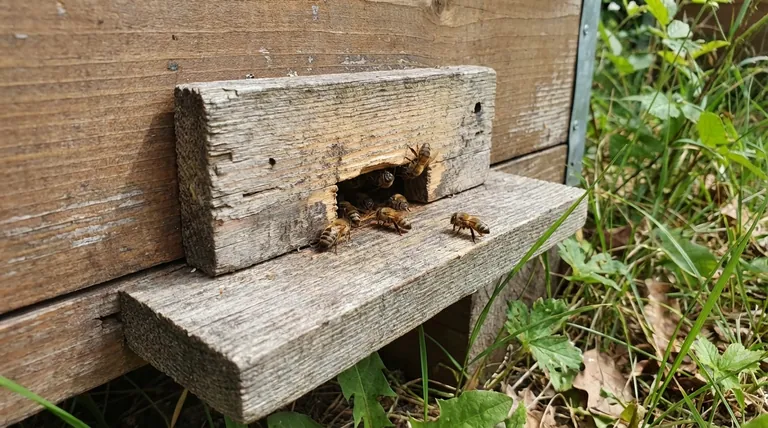
The Mechanics of Hive Defense
A beehive's entrance is its doorway to the world—for both the colony and its potential enemies. Understanding how a reducer changes the dynamic of this space is key to using it effectively.
The Problem of a Wide Entrance
A standard, fully open hive entrance is a large and porous border. For a strong, populous colony in the height of summer, this is an efficient superhighway for foraging bees. For a smaller or weaker colony, however, it is a significant defensive liability.
The Role of Guard Bees
Every colony posts a contingent of guard bees at the entrance. Their job is to inspect incoming bees, repel intruders, and raise the alarm if a major threat appears. A wide entrance forces this guard detail to spread itself thin across a large area, making it easier for invaders to slip past them.
How a Reducer Acts as a Force Multiplier
By installing an entrance reducer, you shrink the front line that the guard bees must defend. This concentrates their efforts into a small, manageable chokepoint. This simple act dramatically increases their defensive efficiency, allowing a small number of guards to repel threats that might have overwhelmed them at a wide-open entrance.
Identifying Key Threats and When to Intervene
The need for a reducer is dictated by the specific threats a colony faces, which often change with the seasons and the colony's own strength.
Winter Intruders: Rodents
During fall and winter, mice and other rodents seek warm, sheltered places to nest. A beehive, with its residual warmth and stored honey, is an ideal target. A mouse can quickly destroy comb, consume honey stores, and foul the hive, leading to the colony's collapse. The small opening on an entrance reducer is a simple and effective physical barrier that mice cannot bypass.
Summer and Fall Invaders: Robbing Bees and Wasps
In late summer and fall when nectar becomes scarce, a phenomenon known as robbing can occur. Stronger honeybee colonies may try to raid weaker ones to steal their honey stores. Wasps and yellow jackets also become aggressive scavengers. A reduced entrance makes it vastly more difficult for these robbers to overwhelm the guard bees and gain access to the hive.
Supporting a Weak or New Colony
A new package of bees, a small nucleus colony ("nuc"), or a colony that has swarmed is inherently vulnerable. With a smaller population, it has fewer guard bees and foragers. Using an entrance reducer with the smallest opening is critical to give these developing colonies a fighting chance to defend themselves as they grow.
Understanding the Trade-offs
An entrance reducer is a powerful tool, but it is not a permanent fixture. Using it at the wrong time can hinder a colony's progress.
The Risk of Reduced Ventilation
Bees cool the hive by fanning their wings and circulating air. A reduced entrance can restrict this airflow. During a hot summer with a strong, populous colony, this can lead to overheating and stress within the hive.
Creating a Foraging Bottleneck
For a booming colony during a heavy nectar flow, a small entrance can create a "traffic jam" for foraging bees trying to enter and exit. This bottleneck can slow down the collection of nectar and pollen, ultimately reducing the season's honey crop.
The Importance of Seasonal Adjustment
An entrance reducer is not a "set it and forget it" device. A beekeeper must actively manage the entrance size based on the season, the colony's population, and local pest pressure. What is essential in winter can be detrimental in summer.
Making the Right Choice for Your Hive
The decision to use an entrance reducer, and which opening size to select, should be a conscious choice based on the specific needs of your colony.
- If you have a new or weak colony: Use the smallest opening to give them the maximum defensive advantage as they build their population.
- If you are heading into fall and winter: Use the small opening specifically to act as a mouse guard and prevent rodents from taking up residence.
- If your hive is being targeted by robbing bees or wasps: Immediately reduce the entrance to the smallest possible size to help the guards defend their home.
- If you have a strong, populous colony in peak summer: You can often remove the reducer entirely to maximize ventilation and forager traffic, but remain vigilant for any signs of robbing.
Properly managing your hive's entrance is a fundamental act of stewardship that directly impacts its health, security, and productivity.
Summary Table:
| Situation | Recommended Action | Primary Benefit |
|---|---|---|
| New or Weak Colony | Use smallest opening | Maximum defense for building population |
| Fall & Winter | Use small opening | Prevents rodent intrusion |
| Robbing Bees/Wasps | Immediately reduce to smallest size | Creates a defensible chokepoint |
| Strong Colony in Summer | Remove reducer | Maximizes ventilation & forager traffic |
Protect your investment and strengthen your colonies with professional-grade equipment from HONESTBEE. Our entrance reducers are designed to provide the reliable, seasonally-appropriate defense your commercial apiary or distribution business depends on. Let us help you equip your hives for success. Contact HONESTBEE today to discuss your wholesale supply needs.
Visual Guide
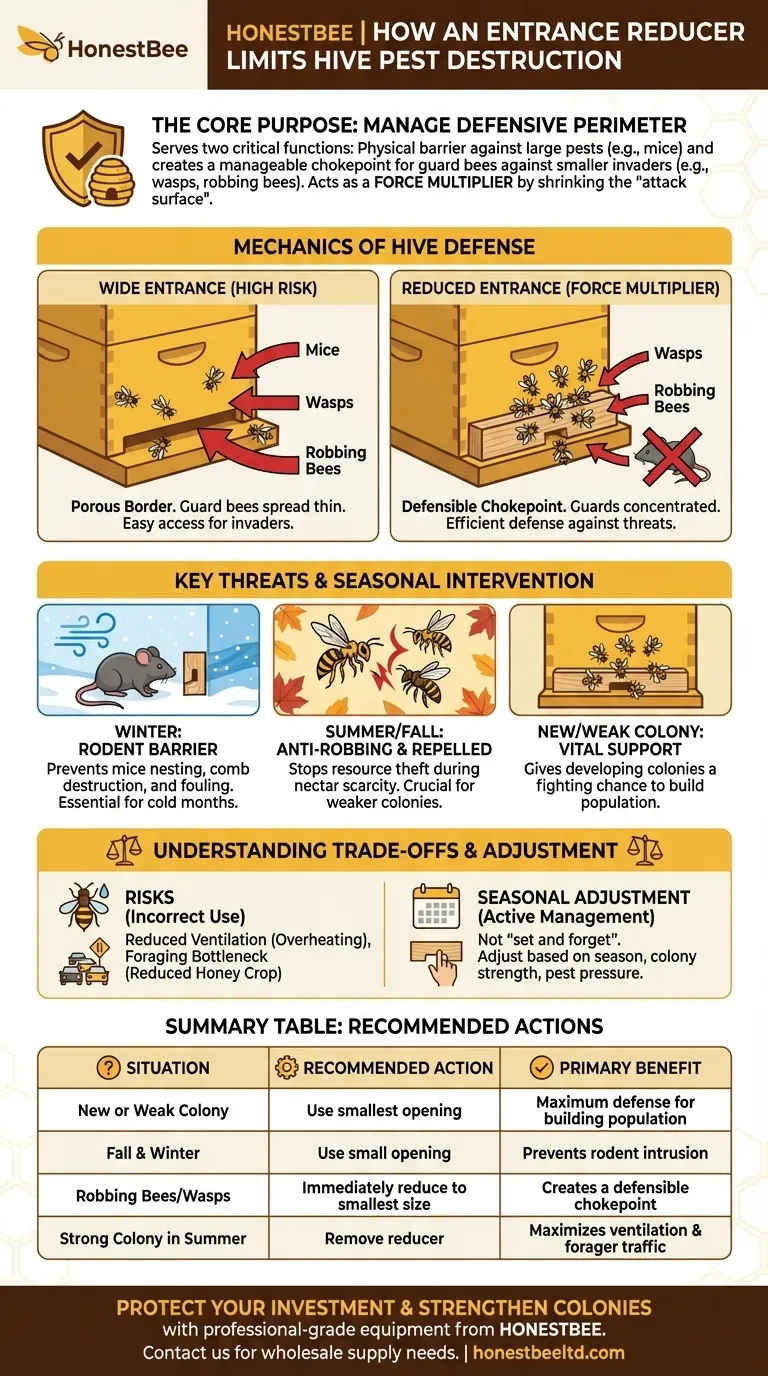
Related Products
- Multi-Function Plier-Style Frame Grip Hive Tool
- HONESTBEE Professional Multi-Functional Hive Tool with Ergonomic Wood Handle
- Professional Dual-End Stainless Steel Hive Tool for Beekeeping
- HONESTBEE Professional Long Handled Hive Tool with Precision Cutting Blade
- Professional Stainless Steel Pry-Bar Hive Tool
People Also Ask
- What are the basic tools for beekeeping? Essential Starter Kit for Safe & Successful Hive Management
- What safety precautions are advised for beekeeping with hive tools? Master Safe Handling for Calm, Efficient Hives
- What are the normal functions of a hive tool? The Essential Multi-Tool for Every Beekeeper
- What types of hive tools are available for beekeepers? Choose the Right Lever for Your Apiary
- How do you tell if a hive has a queen? Look for These 3 Key Signs in Your Brood Frames
